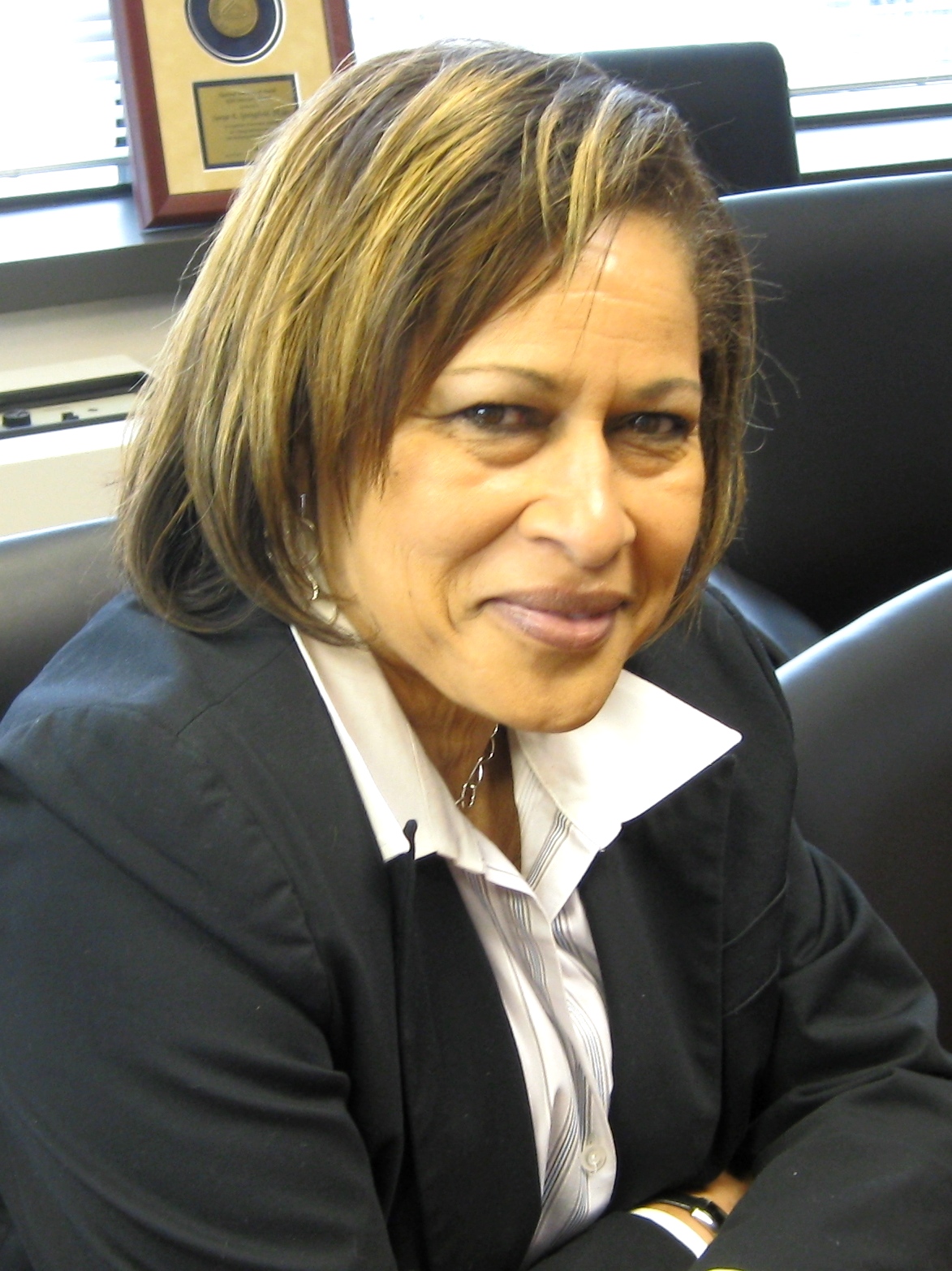Meetings and Events
Spring 2013
Vol. 8, Issue 1
Winter 2013
Vol. 7, Issue 2
Spring 2012
Vol. 7, Issue 1
Spring 2011
Vol. 6, Issue 1
Fall 2011
Vol. 6, Issue 2
Spring 2010
Vol. 5, Issue 1
Fall 2010
Vol. 5, Issue 2
Spring 2009
Vol. 4, Issue 1
Fall 2009
Vol. 4, Issue 2
Spring 2008
Vol. 3, Issue 1
Fall 2008
Vol. 3, Issue 2
Fall 2007
Vol. 2, Issue 2
Winter 2007
Vol. 2, Issue 1
Summer 2006
Vol. 1, Issue 2
A Conversation With

Sanya A. Springfield, Ph.D.
Director
Center to Reduce Cancer Health Disparities (CRCHD)
Q. Would you give an overview of CRCHD and your role as Director?
Established in March 2001, the CRCHD (http://crchd.cancer.gov/) is central to NCI's efforts to reduce the unequal burden of cancer in underserved populations. These populations include racial and ethnic minorities, the socioeconomically disadvantaged, and the medically underserved from communities across the country. As the Director of CRCHD, I oversee CRCHD's mission by coordinating and strengthening the work of the Center. This work involves collaborating with other NCI divisions and NIH Institutes and Centers to fund research and training initiatives that focus on identifying, understanding, preventing, diagnosing, and treating cancer in our target disparities communities.
Specifically, CRCHD supports grants to fund investigators and institutions that work with our target populations, as well as offering funding to increase the number of competitive researchers in cancer and cancer health disparities research, with particular focus on training researchers from under-represented backgrounds. In addition, CRCHD fosters the development of state-of-the-art regional networks and centers dedicated to cancer health disparities research and care through geographic program management.
Q. Do you have any current or upcoming CAM projects within your office?
A number of the current projects that CRCHD supports provide funding for CAM-related research. In one recent study, investigators from New Mexico State University at Las Cruces and the Fred Hutchinson Cancer Research Center—part of CRCHD's Comprehensive Partnership to Reduce Cancer Health Disparities (http://crchd.cancer.gov/research/cprchd-overview.html) program—isolated a new compound from Datura inoxia, also known as thorn apple (http://plants.usda.gov/java/profile?symbol=DAIN2), a native plant of the Southwest, which has long been used by Native Americans as a topical anesthetic and to treat asthma. Initial in vitro testing of this compound suggests that it works by inhibiting the division of breast cancer cell lines. Further testing in other cancer cells is also being conducted.
In addition, many of our community-outreach programs work to decrease the time between cancer diagnosis and the receipt of quality cancer care for underserved cancer patients, helping them navigate the logistics of modern biomedical treatment. At Boston University, Drs. Karen Freund and Tracy Battaglia have been developing a cadre of patient navigators who can work with members of local minority and immigrant communities. In order to be effective in this role, these navigators—called promotoras within Latino communities—work within the cultural environment of their patients and remain aware of the local treatments common within a particular population and how such treatments can interact with and/or complement the biomedical care the patients receive in the hospital. The navigators work within the CAM universe, both acknowledging and incorporating CAMs in their patients' treatment plans, in order to improve their patients' care.
Q. How do you feel CAM fits in with your mission to reduce the unequal burden of cancer in our society?
CAM is part of the culture of many of the underserved populations with whom we work, including Hispanics, Pacific Islanders, Native Americans, Alaska Natives, Asian Americans, and recently immigrated Africans. The potential for CAM to promote healing and soothe suffering in cancer patients from these populations is strong and since they are locally acceptable and effective treatments for members of our target communities, CRCHD has a strong interest in supporting CAM research.
Indeed, CRCHD promotes partnerships and programs that draw upon the cultural roots of the populations with whom we work—including using traditional medicine in combination with conventional treatments. Documenting, explaining, promoting, and promulgating such natural, community-based preventions are part of the mission of CRCHD.
Q. Can you speak a bit about the research of traditional practices that is supported by the Center?
Several of our grantees integrate traditional treatments with modern medicine. Within our Community Networks Programs (http://crchd.cancer.gov/cnp/overview.html), Dr. Jeffrey Henderson—a Lakota, enrolled in the Cheyenne River Sioux Tribe—is working through the Black Hills Center for American Indian Health in Rapid City, South Dakota to increase cancer education and training within the Lakota Sioux. As part of the Regional Native American Community Network Program, Dr. Henderson has long been interested in the role of traditional medicines for healing and prevention within his native tribe—most particularly the Lakota’s holistic view of health. Some of his current research involves studying lifestyle and behavioral risk factors associated with cancer—particularly lung cancer—among American Indians and Alaska Natives as well as investigating Lakota Sioux attitudes toward biomedical research. Both of these research programs examine how Native Americans integrate modern and traditional practices and medicines, both successfully and unsuccessfully, and use those findings to decrease cancer susceptibility.
Ultimately, the work of the Center is interconnected: it moves from the bench to the community and from the community back to the bench. This interconnection is seen in the Center's fundamental mission to foster research into mitigating health disparities in underserved communities and in training the next generation of competitive cancer researchers from diverse backgrounds. Research conducted by and with diverse scientists and community members can effectively appeal to and mobilize a community’s local knowledge and practices—including those that are CAM-related—towards achieving better health. Acknowledging and supporting these local CAM practices is an important component to substantively and sustainably reducing disparities—and it is in recognizing this importance that the visions of OCCAM and CRCHD most clearly align.





